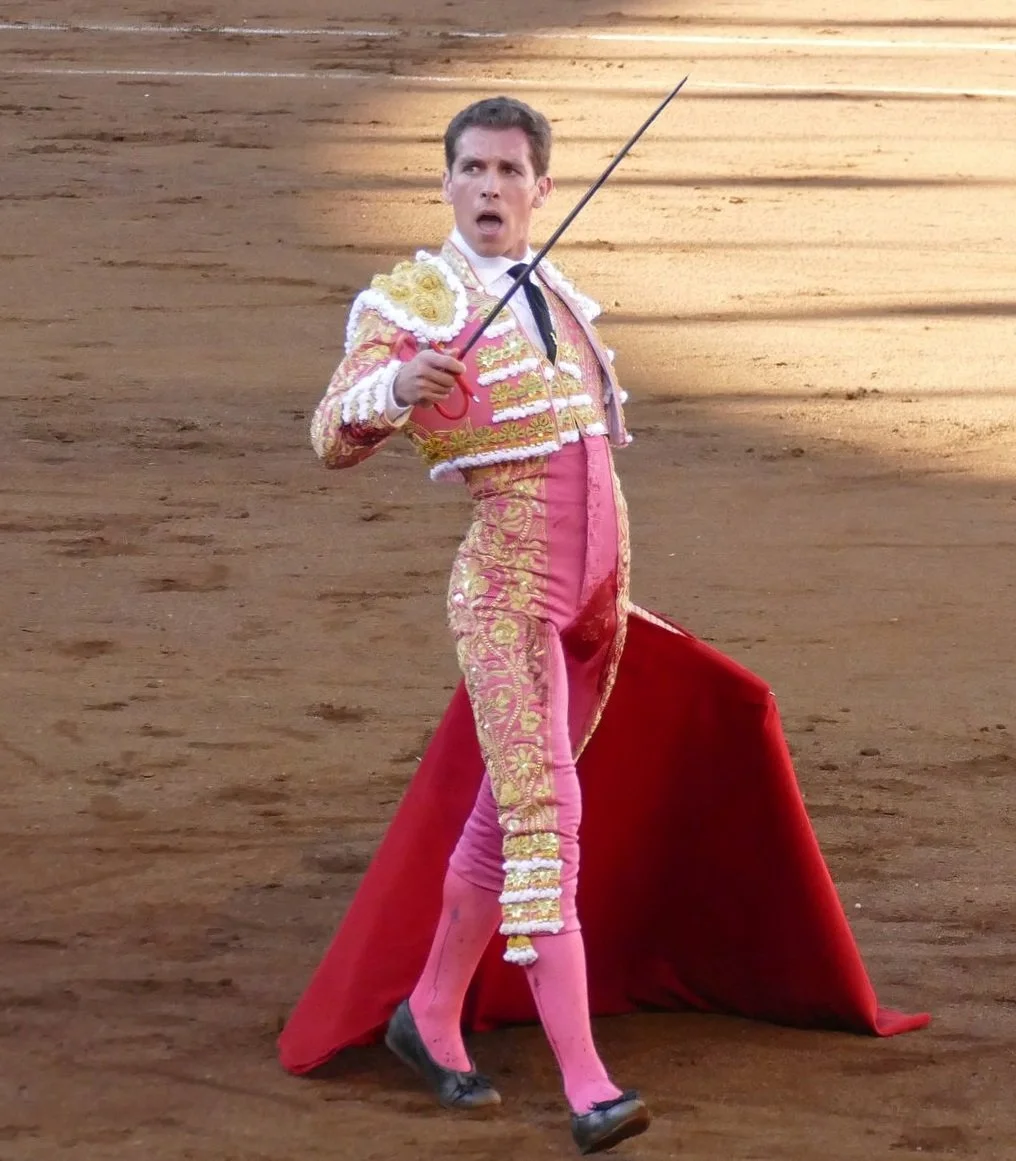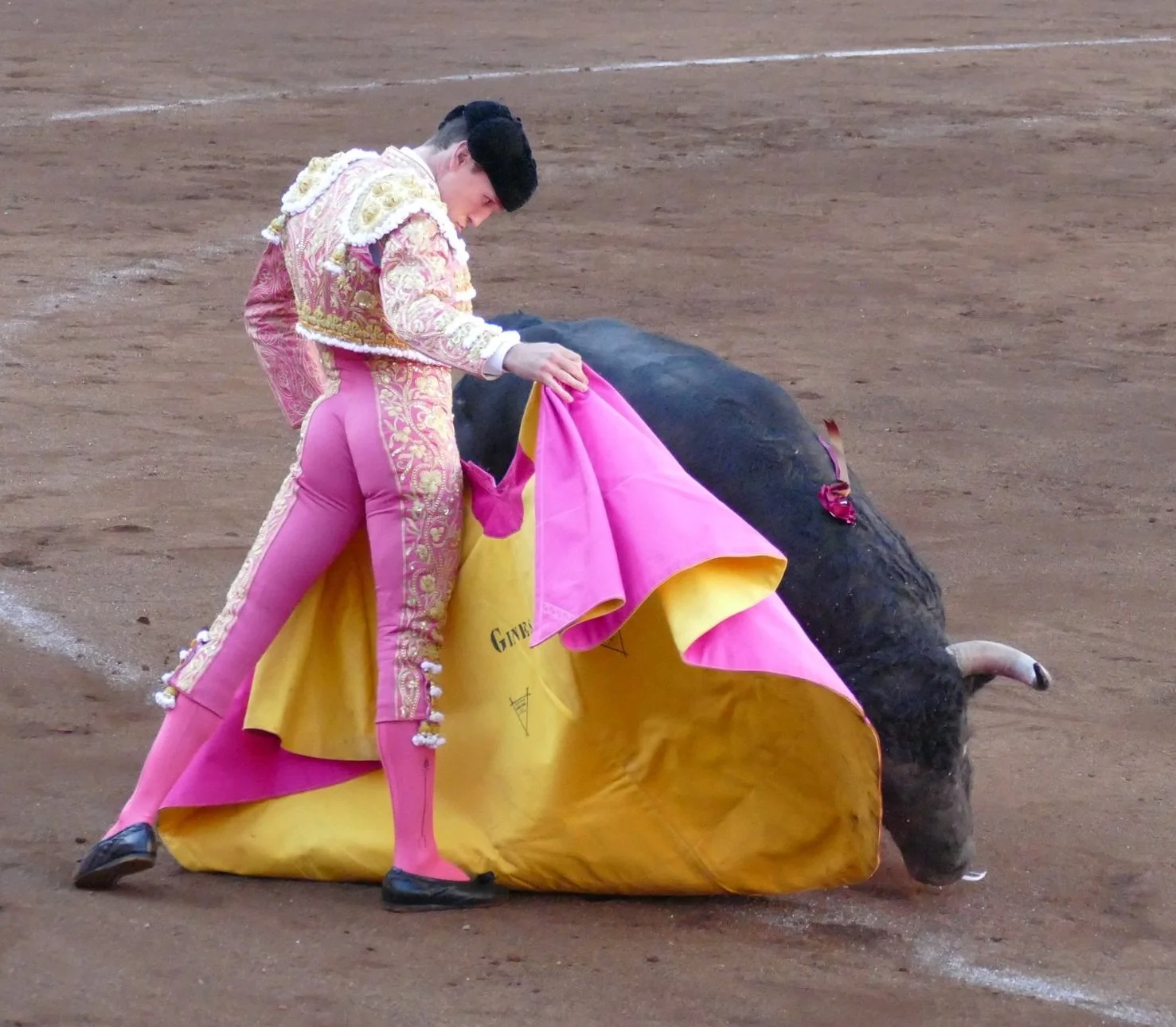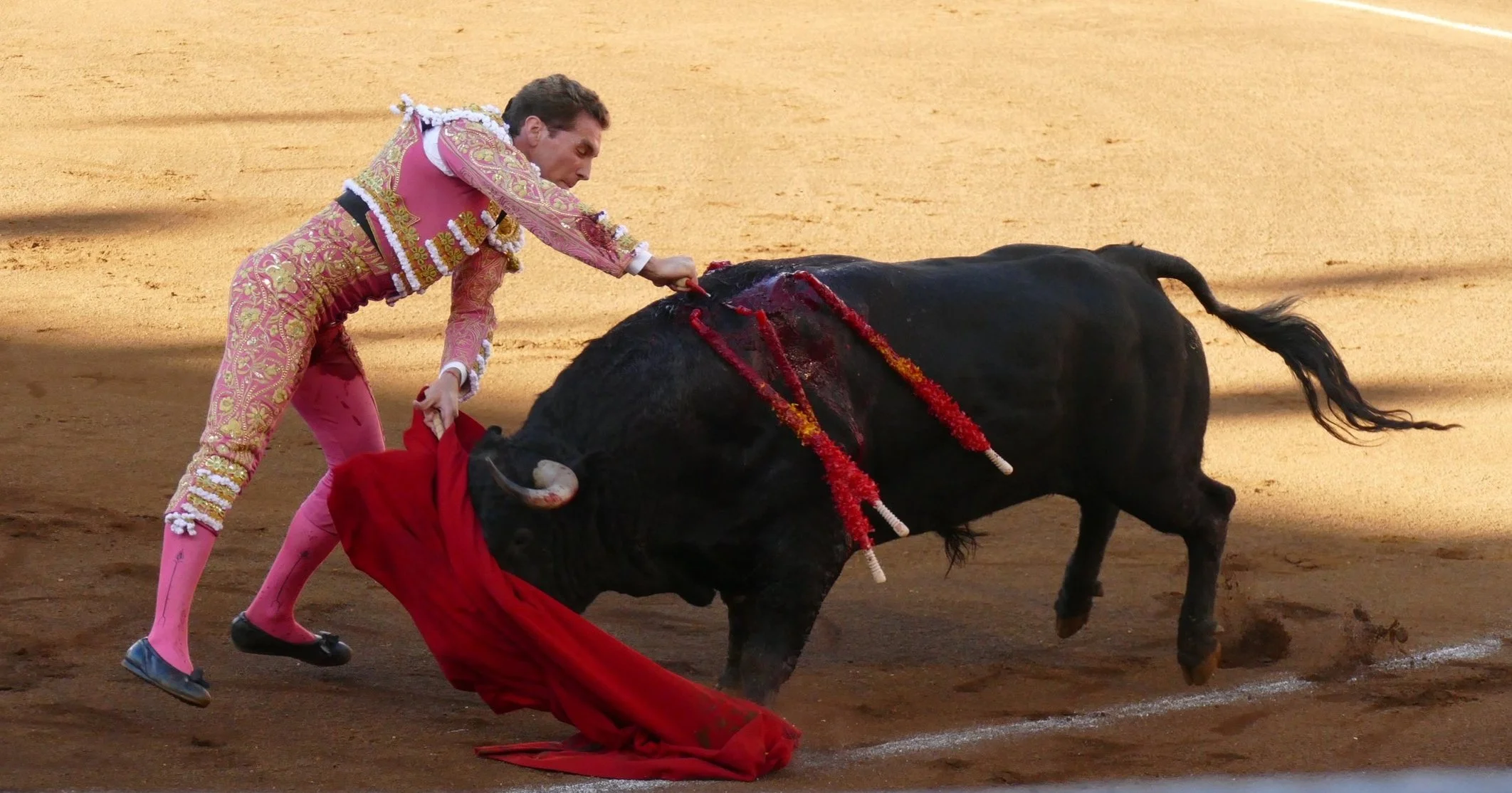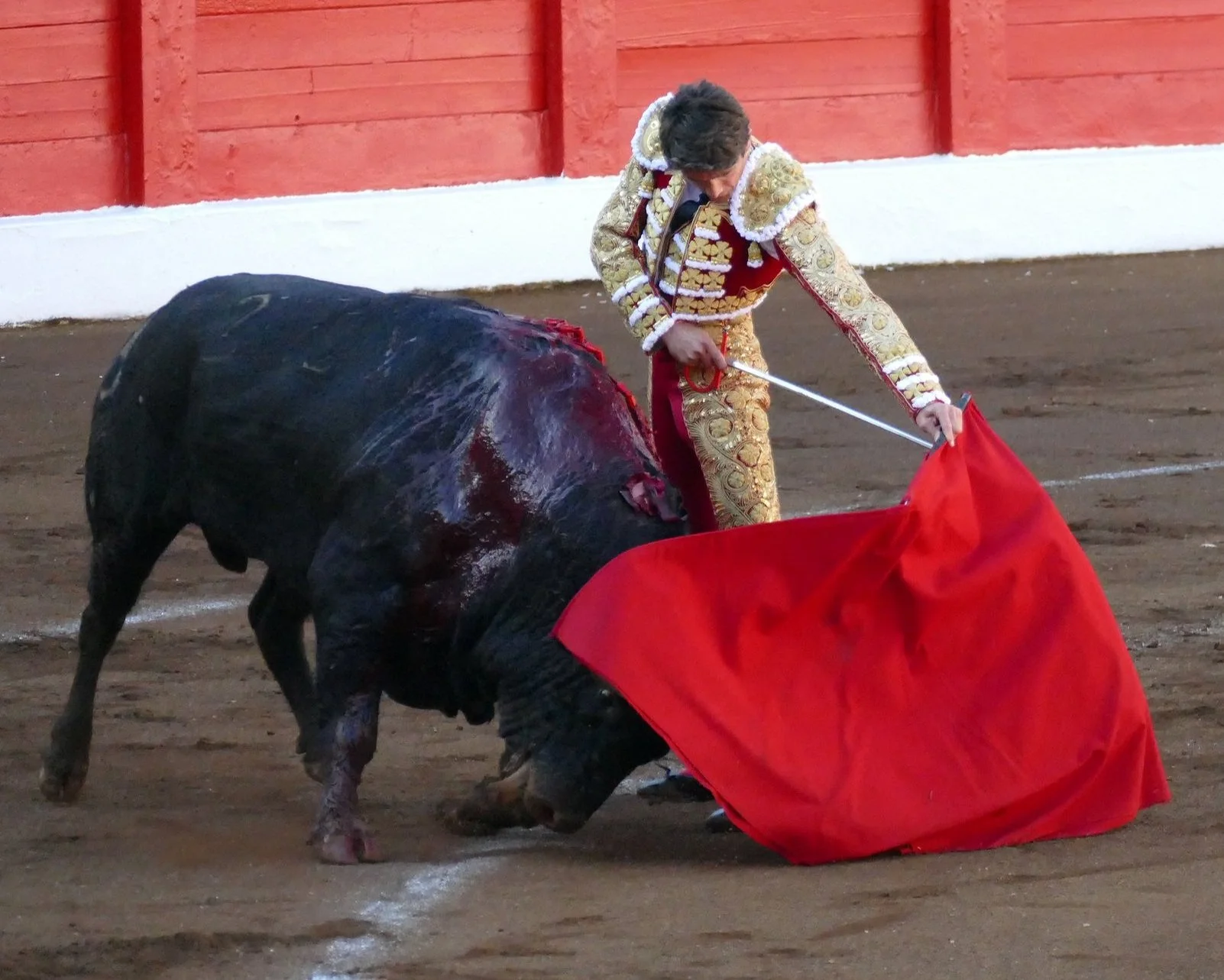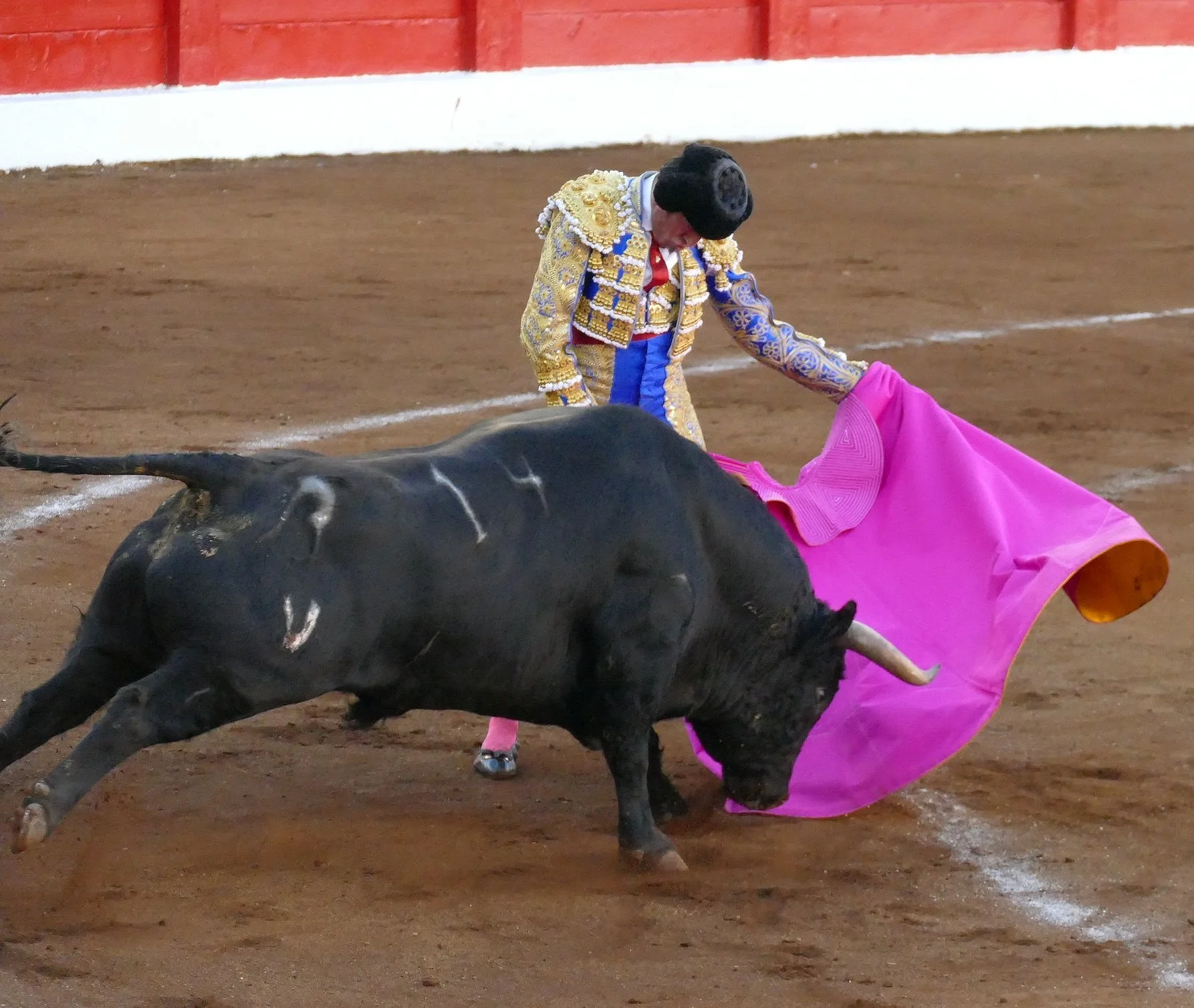Santander, July 22: “Torero de Santander”
Ginés Marín, so the media tell me, is a “torero de Santander” on the strength of a string of triumphs in the plaza, although this near-regular attendee (a man I encountered before today’s corrida was keen to find out more about me and my usual companions, and reminded me that I must have been coming to Santander’s Semana Grande for some 30 years) thinks of Marín and Santander in terms of a boring encerrona held here two years ago and then the fact that the extremeño only came into last year’s feria as a substitute for an injured colleague.
Never mind. This year, Ginés was fortunate to draw the best of a generallly manso string of bulls from Antonio Bañuelos - well-presented in the main but varying greatly in weight (from 463 to 649 kilos) - and made the most of it. He began with some exquisitely sculptured verónicas, a chicuelina and larga and, after Santander’s typical sole vara, followed up with a quite of chicuelinas. Antonio Chacón won applause for his banderillas, and then there was more applause as Ginés dedicated his faena to a spectating Morante de la Puebla, due to torear here tomorrow after a two months away from the bullrings struggling with depression. The faena was pretty good, Ginés passing the bull on each horn in linked series of muletazos, although there were rather too many enganches for this spectator’s liking, and some of the passes involved taking the animal past in straight lines rather than creating curves. It was crowned by an excellent estocada, which brought Marín two ears and another Santander exit on shoulders, albeit, in reality, a minor triumph.
His other animal crashed into a burladero on entry and couldn’t get back on its feet, giving the puntillero a difficult time as it moved its head and legs wildly in its efforts to recover. The sobrero was anovillado in appearance. Ginés gave it two or three half-kneeling verónicas before it spent minimal time with his father. The banderillas were poor, and then Ginés gave a dedication of the animal to the public. However, the bull was not keen to charge for very long in the faena, its matador resorting to not very good arrimón, predictably interspersed with pases circulares, in an effort to maintain interest. He killed with a sword delivered from the bull’s side. There was a small minority petition, followed by silence both in and after the arrastre.
In truth, the spirit had gone out of this corrida by now, Ginés’ performance with the third bull being the only real highlight. Sebastián Castella and Emilio de Justo had tried to succeed with the animals they’d drawn, but only managed isolated passes of worth.
Castella was bemused by his opening bañuelos. There was a promising start when the French veteran collected the bull in verónicas, taking it to the centre of the ring for two media verónicas. After the bull was given a light pic (blink and you’d miss it), José Chacón delivered some fine banderillas. However, Raphael Viotti had experienced a lot of difficulty in positioning the animal for los rehiletes, and, come the faena, it became clear that its sole desire was to hug the barrera. Castella managed to draw it away for some linked series, but its behaviour worsened and proved particularly problematic at the kill. After an aviso and a decent estocada, the bull was dragged out to pitos, while its matador received silence.
His other bull showed a good charge and was dedicated to the public after some fine capework and patchy banderillas. Castella began the faena with estatuarios and thereafter focused on lengthening the bull’s charge,, being more successful on the right hand than the left. Having already received one aviso for the length of his faena, Sebastián was quick to take the descabello after his estocada proved insufficient to down the bull, but the trumpet blew again before his work was over. The bull was taken out to silence while Castella received an ovation and took saludos.
There was a minority petition after Emilio de Justo’s lidia of his first bull, although he was extremely careful with it in the faena as the animal had impressive horns but had a short charge coupled with an ability to turn quickly at the end of a pass. There were some fine single passes and an excellent estocada. With his second bañuelos, Emilio showed he could produce verónicas just as great as those seen from Castella and Marín. His quite of chicuelinas, however, was spoilt by the matador’s moving in each lance. The faena was dedicated to the plaza and contained some lovely passes including some naturales con pies juntos, the bull proving best on its left horn. Unfortunately, the animal would hook upwards in any pass that wasn’t low, so enganches, particularly at the end of series, were common. A pinchazo, estocada and aviso led to silence for both parties, rather unfairly in the matador’s case.
